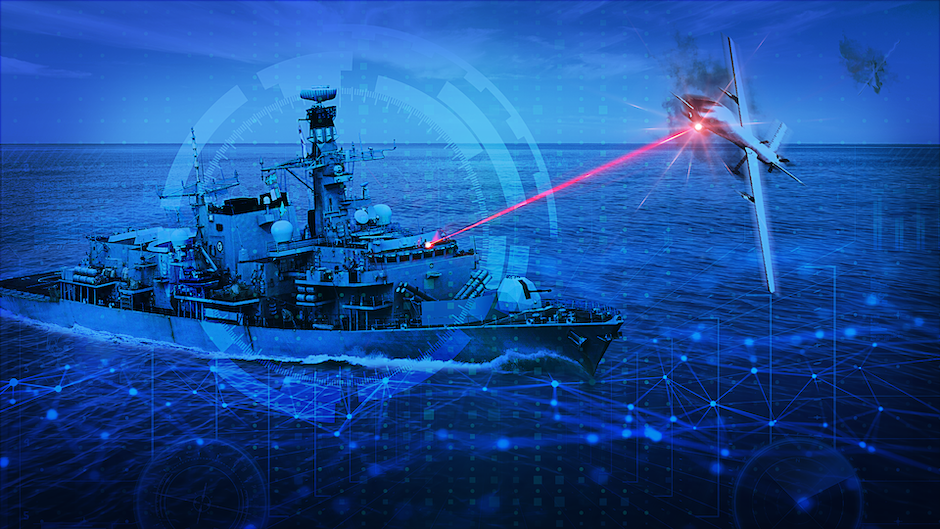MOD invests £72.5m in Directed Energy Weapons
The Ministry of Defence has awarded around £72.5m to UK industry consortia, headed by Thales and Raytheon UK, for production of Directed Energy Weapons.

Part of the Novel Weapons Programme (NWP), the announcement will see significant investment in the development of directed energy engineers including around 30 new jobs to be created at Thales’ site in Belfast, Northern Ireland.
Three DEW capability demonstrators will be developed as part of the investment. The first laser demonstrator (LDEW), led by Thales, will undergo user testing onboard a Royal Navy Type 23 frigate by detecting, tracking, engaging and countering Unmanned Aerial Vehicles (UAVs). Partners will include BAE Systems, Chess Dynamics, Vision4CE and IPG.
The British Army’s Wolfhound armoured vehicle will host another laser demonstrator, developed by a consortium led by Raytheon, that will investigate capability against UAVs and other air threats. Frazier Nash Consultancy and NP Aerospace will work alongside Raytheon on this.
Thales will also lead development of a radio frequency (RF) demonstrator, which will be used by the British Army, hosted on a MAN SV truck to detect and track air, land and sea targets. This will involve collaboration with Qinetiq, Teledyne e2v and Horiba Mira.
Register now to continue reading
Thanks for visiting The Engineer. You’ve now reached your monthly limit of news stories. Register for free to unlock unlimited access to all of our news coverage, as well as premium content including opinion, in-depth features and special reports.
Benefits of registering
-
In-depth insights and coverage of key emerging trends
-
Unrestricted access to special reports throughout the year
-
Daily technology news delivered straight to your inbox










National Gas receives funding to develop Gravitricity underground hydrogen storage system
One single rock salt mine - Winsford - has 23 <i>MILLION </i>cubic metres of void and even allowing for 10% of that void set aside for hazardous waste...